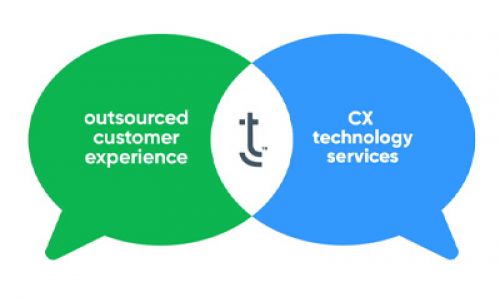When it comes to customer service, customers expect fast and accurate support through the channel of their choice. It’s up to businesses to figure out how to best meet those expectations. This typically means choosing between omnichannel versus multichannel support.
And while both terms are often used interchangeably, there are distinct differences to these approaches. We’ll review those key differences, how to select the right approach, and best practices for delivering customer support that results in happy customers.
What is omnichannel support?
A defining characteristic of omnichannel support is that customer support is available across all communication channels, delivering a consistent customer experience. The key to an omnichannel approach is giving the support team access to customer data and metrics across any channel. In an omnichannel contact centre, associates can share notes about previous interactions with the customer across touchpoints. It also saves customers time from having to repeat their question or issue.
What are the benefits of omnichannel support?
Customers want fast and convenient service through any channel. Omnichannel support does exactly that by connecting the customer experience across channels and touchpoints, allowing brands to deliver the quick, personalised resolutions that customers crave.
Omnichannel support has also been shown to increase customer satisfaction and retention – a significant benefit to a company’s bottom line. In addition to making customers happy, an omnichannel contact centre adds value by centralising data and tools under one system, which reduces resolution time while increasing efficiency and savings.
What is multichannel support?
In contrast to omnichannel support, multichannel support means a company provides customer support through multiple channels, but those channels are not necessarily connected. In a multichannel contact centre, for instance, associates would not be able to tell that a customer who reached out through live chat is the same customer who later made a phone call, since each channel accounts for different streams of conversation.
What are the benefits of multichannel support?
The benefit of a multichannel approach is that it allows brands to offer many support options without taking the time to unify them. This approach could be ideal for a new company that wants to quickly engage with customers through their preferred channel of communication. And if a company doesn’t have high customer volume yet, associates may not need to transition customers from one channel to another or track the context of previous interactions.
So, is one approach better than the other?
The bottom line is that companies must assess their needs, resources, and goals when choosing between omnichannel or multichannel support. Omnichannel support’s emphasis on interconnected channels might seem to be the better choice, but only if a company’s people, processes, and technology are appropriately aligned. It is also possible to start with a multichannel support experience before transitioning to omnichannel. The application of a few simple best practices helps to make the process of planning, investing, and implementing a customer support approach even easier.
1. Identify and prioritise high value service experiences. Is the goal to give customers as many options as possible to engage with your company or is it to ensure that customers have a seamless service experience? Focus on the experience that would deliver the biggest payoff. For some organisations, that might mean enhancing the quality of service versus focusing on acquisition processes or vice versa.
2. Be agile Keep track of new software developments and learnings, adopting a more iterative approach to implementation versus a one and done. Capture value immediately by embracing progress over perfection with the knowledge that the experience will be improved over time.
3. Be bold. The benchmark for reshaping the experience cannot be internally focused. Keep track of the marketplace and understand that the expectations of customers are shaped by their best experiences in any space or industry. Making investments to optimise a bad or even average experience might be worse than not investing at all.
Omnichannel vs. multichannel support in a nutshell
Selecting the right customer support can be difficult but understanding the nuances of each makes the decision easier. Both omnichannel and multichannel support enable brands to assist customers via different channels but they offer different experiences. With omnichannel support, all the support channels are interconnected, creating a seamless experience for both employee and customer. Associates can share information about customer interactions across channels.
Multichannel support doesn’t require integration processes and technology, which could appeal to new companies. The drawback is less insight into how customers interact with the company. This could potentially increase average handle times and churn due as associates repeatedly ask for information from customers. Regardless of the support option, ensuring that it meets your customer experience goals and expectations will put you on the road to success.
Learn more about omnichannel and multichannel support
Omnichannel excellence is a marathon, not a sprint – We provide insights into customer expectations and preferences that guide your omnichannel strategy.
Delivering great experiences amid the digital transformation – Leaders of TTEC, Cisco and IMI mobile discussed the role of CX in this “new normal” during a webinar.
From siloed inefficiency to omnichannel transformation – Here’s how TTEC guided a major retailer in transforming its disparate channels into a powerful omnichannel customer support engine that enabled a small customer support team to rapidly scale.






